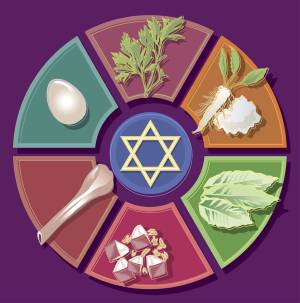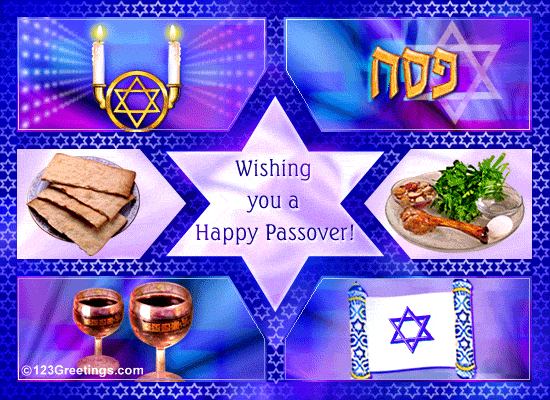Passover: The Basics

April 28, 2014
What looks like cardboard and tastes about the same?
Matzos! That’s what!
Passover is a spring time holiday. Much like the celebration of Easter, Passover is a time for family and great food…minus the breads, pastas, and yummy dessert!
The story of Passover is set in the time of when Moses and the Jewish people were enslaved in Egypt by the Pharaoh. This was a time of hardship for the Jewish people, fighting once again for their freedom.
At a traditional Passover dinner, mainly called a Seder, there is a ‘Seder Plate’ which holds the symbols of Passover for the whole table to see. The 5 symbols of Passover are Karpas (the green vegetable, often represented by parsley,) the roasted shank bone (turkey or chicken bone,) Baytzah (or hard boiled egg,) Charoset (something sweet such as apples, nuts, and grape juice,) and finally the Maror (bitter herbs.)
During the Seder you are to wash your hands clean to times, to rinse away your sins and hard times. This is called Yarchatz. More traditional families will pass a large bowl of water and a towel around the table in which all those participating would wash their hands at their seats.
The Karpas, or green vegetable, is dipped in salt water once during the course of the Seder. The symbol of the salt water is to taste our ancestor’s tears throughout their slavery and to taste the smallest part of their suffering.
The roasted shank bone reminds us of the tenth plague that was cast upon Egypt when the Pharaoh refused to let the Jewish people go. The Batytzah represents fertility and that the people of Israel would live on and survive even the toughest of times that they endured.
The Charoset is sweet. This represents the mortar that the Jewish people were forced to use to build and create great cities for the Pharaoh. Finally the Maror represents the bitterness of slavery. This is often represented by horseradish.
The Seder, however, is not all bitterness and sorrow. There are songs to be sung and prayers of thanks to be said. The 10 plagues casted upon Egypt are also recited throughout the course of the Seder. Participants fill their wine up (or grade juice for those too young) and together each plague is recited and with each passing one, you dip a finger into the wine and put a drop on your plate.
Blood. Frogs. Lice. Flies. Killing of livestock. Boils. Hail. Locust. Darkness. Slaying of the first-born son.
The youngest child at the Seder able to participate also has a special role. They are to ask the four questions to he group, who will then respond with answers in unison after. These questions are sung and then read aloud.
The best part of the holiday, however, is the afikoman. This is a piece of matzos that is broken in half at the start of the Seder by the leader, whom is usually the oldest male in the home. One half of this piece stays on the table covered and the other half is wrapped and hidden somewhere for the children to find. It is looked for after the completion of the meal and the child who finds it gets a prize. Once it is found, the second half of the Seder begins leading up to desert.
There are two Seders; the first and second nights of the holiday. It is a holiday to rejoice and be thankful for the Jewish people’s freedom.
And an awesome excuse to eat a whole lot of food!



